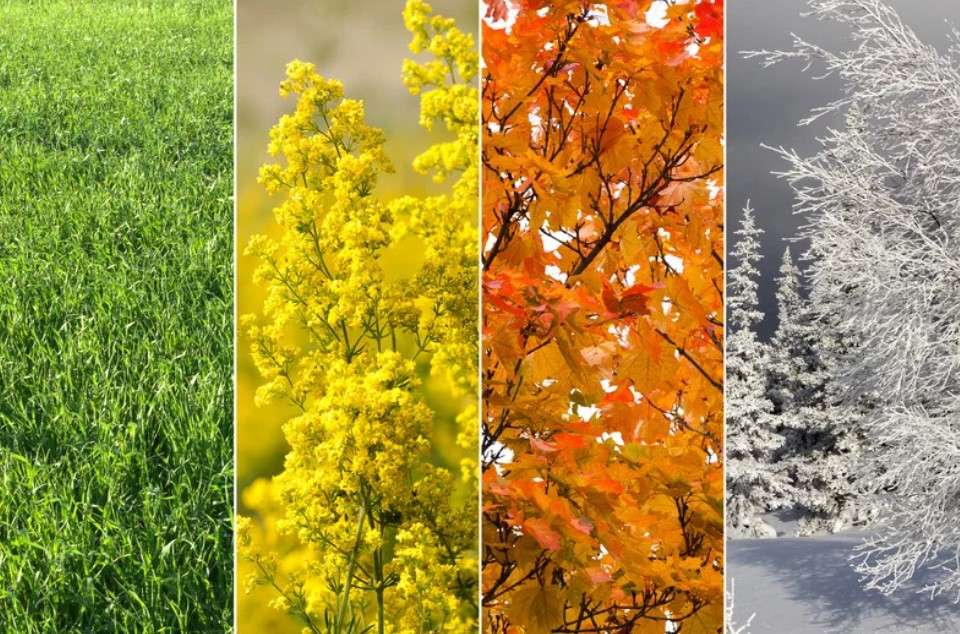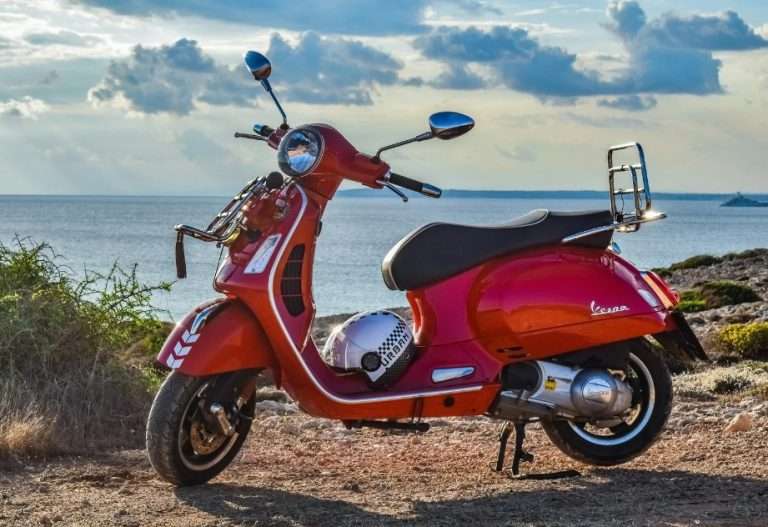The Four Seasons in Italian: A Brief Overview
Exploring the four seasons in Italian reveals Italy’s rich tapestry of weather patterns, cultural traditions, and culinary experiences.
The nation enjoys a Mediterranean climate, marked by hot, dry summers and mild, wet winters. Spring and autumn bring moderate temperatures and sporadic rainfall, adding to the country’s seasonal charm.
The Significance of Seasons in Italian Culture
The distinct characteristics of the four seasons highlight Italy’s stunning natural beauty and rich cultural heritage, offering unique experiences throughout the year.
Our lesson will guide you through each season—spring, summer, autumn, and winter—teaching you how to pronounce their names in Italian and introducing relevant Italian vocabulary and phrases linked to the “le quattro stagioni.”
As you plan your travel or deepen your English and Italian language skills, remember to explore our easy guide on learning the Italian days of the week for more insights into Italian culture and language.
Spring (Primavera) in Italy: The Awakening

Spring, or “Primavera” in Italian, marks a period of renewal and awakening across Italy.
With the arrival of warmer weather, the countryside bursts into vibrant colors and fragrances as hills and valleys are carpeted with wildflowers and trees flourish with new leaves.
This season prompts Italians to emerge from the winter’s embrace to savor the outdoors anew. Use the sound file below to learn how to pronounce “primavera”:
Typical Weather Patterns
In the north of Italy, spring can be brisk, with temperatures fluctuating between 5°C (41°F) and 15°C (59°F). Central Italy enjoys slightly warmer climates, seeing temperatures from 10°C (50°F) to 20°C (68°F).
Meanwhile, the south experiences a much milder spring, with temperatures ranging from 15°C (59°F) to 25°C (77°F). While springtime in Italy is known for its rainfall, it is generally less frequent and intense than in the cold season.
Suggested Read: What is Italy Known For? 100 Things That Make Italy Famous
Festivals and Events
Spring in Italy is marked by a series of vibrant festivals and events that celebrate the country’s cultural richness and diversity.
Among these, Saint Joseph’s Day (also known as Father’s Day in Italy) stands out as a deeply revered celebration, honored in many parts of Italy with traditional foods, bonfires, and theatrical portrayals of Saint Joseph’s life, reflecting the community’s strong familial and spiritual bonds.

Another cornerstone of the Italian spring calendar is Festa della Liberazione (Liberation Day), which is observed on April 25th.
This national holiday commemorates Italy’s liberation from Nazi occupation with nationwide parades, concerts, and gatherings, uniting the country in remembrance and celebration of freedom and peace.
Summer (Estate) in Italy: The Peak Season

Summer, or “Estate” in Italian, marks the peak of tourism from June to August. This period sees the country at its most vibrant, teeming with activities, events, and an influx of visitors eager to explore its cities, beaches, and rural landscapes.
Due to the surge in tourism, accommodation and flight prices typically rise, making early bookings advisable for better deals. Here’s how you pronounce the word “estate”:
The summer months are the most popular for tourists to visit the country. The warm weather and long days make it the perfect time to explore the cities, beaches, and countryside.
As a result, the prices for hotels and flights are generally higher during this time. It is recommended to book in advance to secure the best deals.
Climate and Tourism
Characterized by hot, dry weather, summer temperatures in Italy range from 25°C (77°F) to 35°C (95°F). Coastal areas, in particular, draw crowds looking to bask in the sun.

Destinations like the Amalfi Coast, Sicily, and Sardinia become hotspots for tourists seeking picturesque beaches and the azure allure of the Mediterranean.
Cultural Celebrations
Summer also brings a flourish of cultural celebrations across the country. “La stagione estiva” (summer season) is rich with festivals celebrating traditional Italian customs.
A highlight is the Palio di Siena, a renowned horse race held every July in Siena, drawing thousands of spectators to its historic spectacle.
This period is a showcase of Italy’s enduring traditions and festive spirit, offering visitors a unique glimpse into the country’s cultural heart.
Autumn (Autunno) in Italy: The Harvest Time

Autumn, or “Autunno,” marks harvest time in Italy, transforming the countryside with vibrant shades of red, orange, and yellow as leaves change color.
This period is bustling with activity, notably the grape harvest, which invites visitors to partake in winery tours and tastings. The olive harvest also occurs, offering a glimpse into the olive oil production process. Here’s how you pronounce “autunno” in Italian:
Weather Transition and Activities
The transition to cooler temperatures characterizes autumn in Italy, presenting sunny days with pleasant weather, albeit cooler nights, with temperatures ranging from 5°C (41°F) to 25°C (77°F).
This season is ideal for exploring the nation’s cities and towns more intimately, free from the summer tourist surge.
It also offers perfect conditions for outdoor activities, such as hiking in the mountains, cycling through the countryside, or strolling in parks and gardens. Beaches are quieter, yet the sea remains inviting for those willing to swim.
Traditions and Gastronomy
Autumn in Italy heralds a time of culinary and cultural festivities. The “Fiera del Tartufo” or Truffle Fair in Alba celebrates the revered white truffle, allowing visitors to savor truffle-infused dishes and purchase these delicacies.

Meanwhile, the “Sagra delle Castagne” or Chestnut Festival is a widespread celebration, featuring roasted chestnuts, chestnut flour pasta, and other chestnut specialties, embodying the essence of Italian autumn traditions and gastronomy.
Winter (Inverno) in Italy: The Cool Retreat

Winter in Italy is a magical time, with snow-capped mountains and cozy villages that offer a warm and inviting atmosphere.
The Italian word for winter is “inverno,” and it is a time when many Italians retreat to the countryside to enjoy the peace and quiet of this time of the year. Learn how to say “inverno” (winter in Italian):
Weather and Regional Differences
The weather during “inverno” in Italy varies depending on the region, with temperatures ranging from -5°C (23°F) to 15°C (59°F).
In the north, the Alps receive heavy snowfall, making it a popular destination for winter sports enthusiasts, with temperatures typically between -5°C (23°F) to 5°C (41°F).
In the central regions, such as Tuscany and Umbria, the weather is milder, but still cool enough to enjoy the seasonal scenery. The weather is generally mild in the south, with temperatures rarely dropping below freezing.
Holiday Festivities

Winter in Italy is also a time for celebration, with several holidays taking place during this season. The most famous of these is Christmas, which is celebrated throughout the country with festive lights, decorations, and traditional foods.
Another important holiday is Epiphany, which takes place on January 6th and is marked with parades and the exchange of gifts.
Can’t decide when to visit Italy? Explore our essential weather-centric monthly travel guides.
- Weather in Italy in January
- Weather in Italy in February
- Weather in Italy in March
- Weather in Italy in April
- Weather in Italy in May
- Weather in Italy in June
- Weather in Italy in July
- Weather in Italy in August
- Weather in Italy in September
- Weather in Italy in October
- Weather in Italy in November
- Weather in Italy in December
Learning Italian Through Seasons
It’s now time to learn some words and sentences related to the seasons in Italy, improving your understanding of both the language and the country’s seasonal nuances.
Seasonal Vocabulary
It’s important to mention that, in contrast to English, Italian speakers typically place an article before the season’s name.
| Season | Italian | English |
|---|---|---|
| Spring | la primavera | the spring |
| i fiori | the flowers | |
| la pioggia | the rain | |
| Summer | l’estate | the summer |
| il mare | the sea | |
| il gelato | the ice cream | |
| Autumn | l’autunno | the autumn |
| le foglie | the leaves | |
| le castagne | the chestnuts | |
| Winter | l’inverno | the winter |
| la neve | the snow | |
| il panettone | traditional Italian Christmas cake |
Phrases and Expressions
In addition to seasonal vocabulary, you can practice common phrases and expressions used throughout the year.
| Season | Italian | English |
|---|---|---|
| le quattro stagioni | the four seasons | |
| Spring | Che bello il tempo oggi! | How nice is the weather today! |
| Summer | Oggi è una bella giornata! | Today is a beautiful day! |
| Autumn | Mi piace l’autunno. | I like autumn. |
| Winter | Fa freddo oggi. | It’s cold today. |
Are the Names of the Seasons Capitalized in Italian?
No, the names of the seasons are not capitalized in Italian. In fact, the names of the months, seasons, and days of the week are not capitalized in Italian. It is not a mistake but rather a convention of the language.
Seasonal Cuisine and Produce

Italy’s renowned cuisine deeply reflects the country’s seasonal rhythms, with each period introducing distinct flavors and ingredients that inspire a variety of dishes.
In spring, Italians embrace fresh produce like asparagus, artichokes, and fava beans, incorporating them into pasta, risotto, and salads. This season is also celebrated for lamb, a favored choice in Italian kitchens.
Summer heralds the arrival of tomatoes, eggplants, zucchini, and peppers, foundational for classic recipes such as caponata, ratatouille, and Pasta alla Norma. Additionally, the warmer months of the year are perfect for savoring seafood, offering an array of fish and shellfish dishes.
Autumn invites the enjoyment of hearty fare featuring mushrooms, pumpkin, and chestnuts, which find their way into soups, stews, and risottos. This time of year is also notable for the coveted truffles, elevating the cuisine with their unique flavor.
Winter focuses on citrus fruits like oranges, lemons, and tangerines, essential for creating Italian desserts such as panettone and cassata. Moreover, the colder months favor robust dishes like osso buco, polenta, and minestrone soup, offering warmth and comfort throughout the season.
Further Reading:
- 60 Facts About Christmas in Italy: Fun Holiday Traditions
- 32 Beautiful Famous Italian Gardens to Visit in Italy
- 12 Italian Christmas Drinks: Festive Cocktails from Italy







